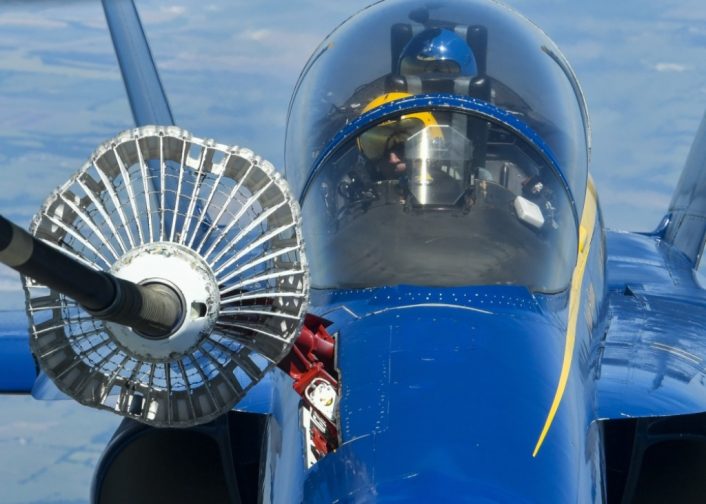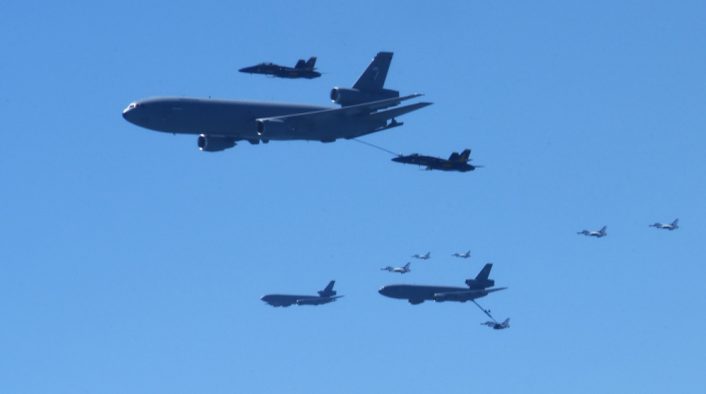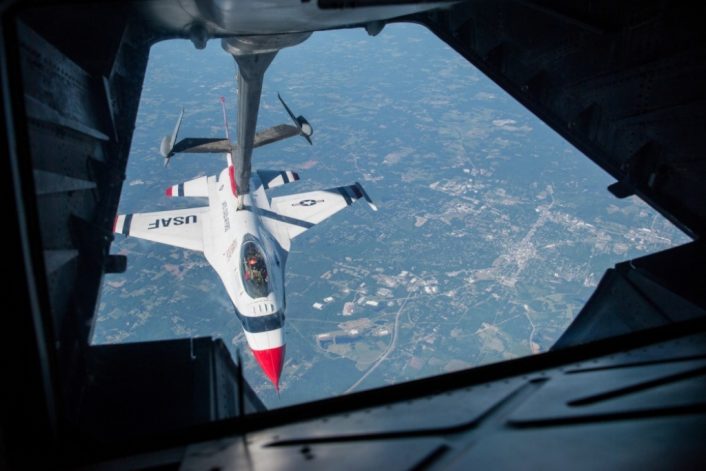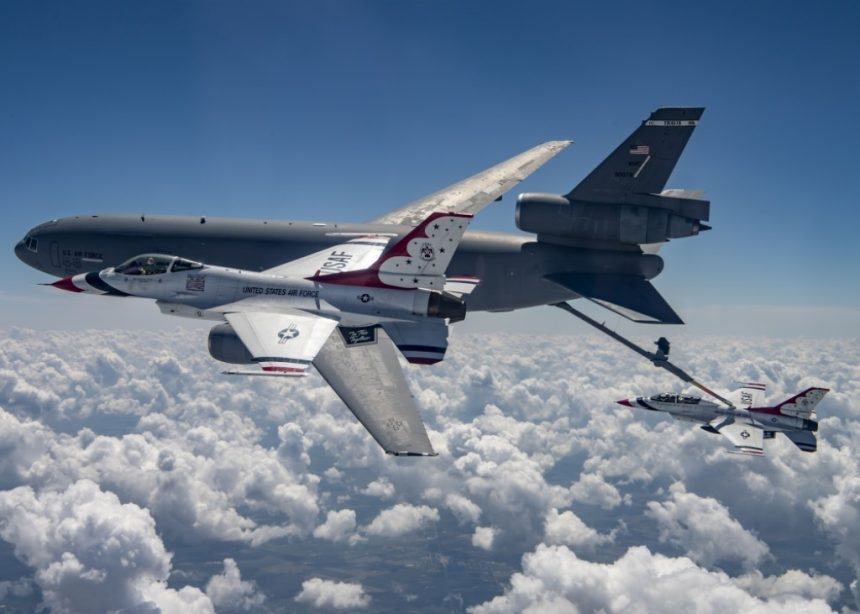During the America Strong salute to COVID-19 healthcare workers, America’s two flight demonstration teams were required to conduct more air-to-air refueling missions than normal.
As compared to a normal air show season, air-to-air refueling was used more extensively for the America Strong Blue Angels and Thunderbirds flyovers across the United States. During the typical air show season, each flight demonstration team might refuel 2-3 times or every 500-600 miles as they fly to the next air show.

Because of the need to safeguard all personnel, who serve with the Blue Angels and Thunderbirds, from Covid-19, both teams were initially stationed out of Naval Air Station Pensacola. Using the New York City/Trenton/Philadelphia flyovers as an example, the teams departed Pensacola, tanked three times, flew the three flyovers and tanked three more times for the return flight.

For this specific mission, the teams were refueled by four KC-10 Extenders operating out of Joint Base McGuire-Dix-Lakehurst. The KC-10 can fuel aircraft equipped for the probe-and-drogue as well as flying boom systems. As opposed to the “hose and drogue” system this AAR system has the advantage to eliminate the requirement for the receiver pilot to plug the IFR (In Flight Refueling) probe into the hose’s drogue: once the aircraft has reached the refueling position the operator moves a flying boom, a rigid, telescoping tube, to insert the tube in the receptacle of the receiver aircraft. The flying boom is the standard AAR system used by the U.S. Air Force and required by aircraft that are equipped with a receptacle (as the F-16, F-15 or the F-35).

With the “hose and drogue” system used by most of the U.S. Navy aircraft, it’s the pilot of the jet who needs to plug the probe into the basket: a pretty complex operation, especially after a long mission, in turbulent/bad weather or at night. With the flying boom, the effort of the AAR operation is mostly on the “boomer” (another nickname for the operator who moves the telescoping tube) who controls the boom while lying prone inside a boom operator station located in the rear of the aircraft, watching the receiver through a rear observation window.
While automatic systems are being tested, some more modern tankers, as the KC-767 and the problematic KC-46, use a remote boom operator’s station located behind the cockpit from where boomers move the boom using a joystick and watching the video from a series of cameras mounted on the tanker’s fuselage: the advanced camera system feeds a Remote Vision System (RVS) that provides high-definition stereoscopic imagery to the vision goggles attached to a sort-of flight helmet worn by the boomer during the air-to-air refueling.










